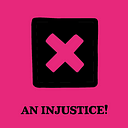Member-only story
Critical Race Theory, Defined
Everyone talks about it, but let’s break down what it means

“In this country American means white. Everybody else has to hyphenate.” — Toni Morrison
In the hopes of making cultural theory more accessible, I want to spend some time defining different types of theories. I’ll start with critical race theory since it’s one of my favorites.
Cultural theory is a way of breaking down a culture by looking at institutions. Critical race theory is a set of ideas that we use to explain the institution of race. While race is not real — meaning it does not occur naturally in our society — it has real implications.
How our society created race is through “othering.” Othering is the way in which the dominant (or defining) group of people separate and elevate themselves from other people. It’s a process of exclusion. Through this exclusion process, the dominant group reigns supreme while “othered” groups are pushed to the margins.
In the United States (and much of the world), the dominant group were the European colonizers. The “othered” groups were first the natives, Africans, immigrants, then whoever else does not fit the narrative of who is white at the time. I say who is white at the time because many non-English but European people have been excluded from claiming whiteness — such as the Irish and Italians during the 1800s and early 1900s.
Europeans creating a society where they asserted dominance over everyone else is where we get the idea of white supremacy. White supremacy is the idea that whiteness (white people and white culture) is both neutral and better in our society. Neutral in that the experiences of white people are universal or expected from everyone — including people who are not white. And better, in that experiences that don’t line up with white culture are either exoticized or frowned upon.
An obvious example of this social pyramid is how labor is divided in the United States. In our minds, who do we see as the slaveholder versus the enslaved? Who is in control versus who is being controlled? In today’s world, who do we envision as bosses versus workers?
If you’re like most Americans, you automatically assume that white people are those in power and…

